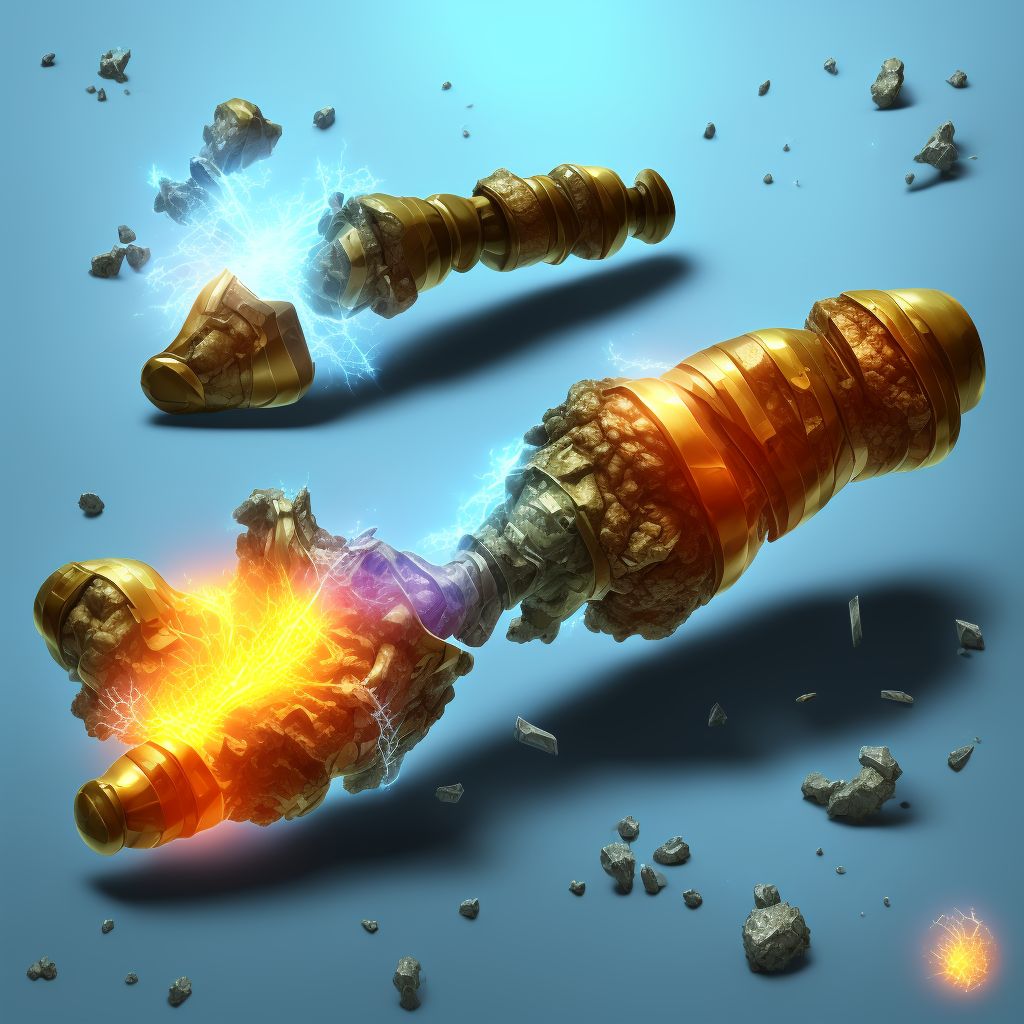
Displaced comminuted fracture of shaft of left tibia, initial encounter for open fracture type IIIA, IIIB, or IIIC Save
ICD-10 code: S82.252C
Disease category: S82.252: Displaced comminuted fracture of shaft of left tibia
Displaced Comminuted Fracture of the Shaft of Left Tibia: Understanding Open Fracture Types IIIA, IIIB, or IIIC
A displaced comminuted fracture of the shaft of the left tibia is a severe injury that requires immediate medical attention. When the fracture is exposed to the external environment, it is classified as an open fracture. These fractures can be further categorized into three types: IIIA, IIIB, or IIIC. In this article, we will explore these open fracture types and their characteristics.
- Type IIIA: Type IIIA open fractures involve a wound smaller than 1 cm. Despite the small size of the wound, the fracture is highly displaced and comminuted, meaning the bone is shattered into multiple pieces. These fractures often require surgical intervention to realign and stabilize the bone.
- Type IIIB: Type IIIB open fractures are characterized by a significant wound larger than 1 cm. Similar to type IIIA fractures, the bone is severely displaced and fragmented. These fractures pose a higher risk of infection due to the exposure of the bone to the external environment. Immediate medical attention is crucial to prevent complications.
- Type IIIC: Type IIIC open fractures are the most severe and complex. These fractures involve extensive soft tissue damage and vascular injury, often resulting in compromised blood supply to the affected limb. Immediate surgical intervention is necessary to restore blood flow and salvage the limb.
When encountering a patient with a displaced comminuted fracture of the shaft of the left tibia, healthcare professionals must carefully assess the open fracture type to determine the appropriate course of action. Treatment options may include wound irrigation, debridement, and fracture stabilization.
It is important to note that this article does not cover treatment methods for this specific condition. Treatment plans are determined by healthcare professionals based on the severity of the fracture and the patient's overall health.
In conclusion, a displaced comminuted fracture of the shaft of the left tibia can result in open fractures of type IIIA, IIIB, or IIIC. Seeking immediate medical attention is crucial to prevent complications associated with these severe injuries. Healthcare professionals will assess the open fracture type and develop a treatment plan tailored to the individual patient's needs.
Treatment of Displaced comminuted fracture of shaft of left tibia, initial encounter for open fracture type IIIA, IIIB, or IIIC:
Treatment Options for Displaced Comminuted Fracture of Shaft of Left Tibia
When it comes to the treatment of a displaced comminuted fracture of the shaft of the left tibia, it's crucial to consider the severity and type of open fracture. Open fractures are classified as type IIIA, IIIB, or IIIC, depending on the extent of soft tissue damage and the severity of bone fragmentation. A...
To see full information about treatment please Sign up or Log in